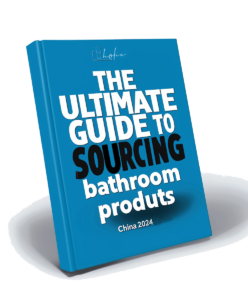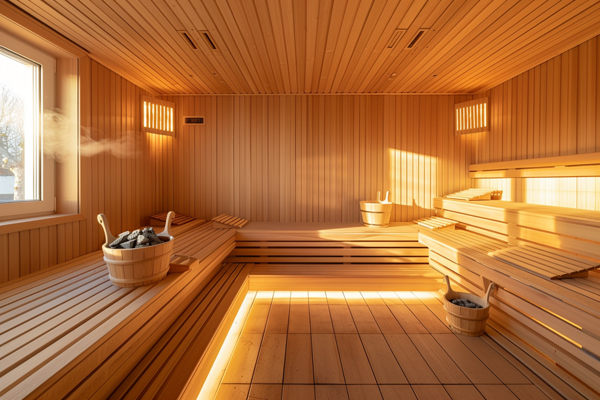
Keeping a sauna clean ensures durability and hygiene. Neglecting maintenance can lead to mold, bacteria, and damage.
Regular cleaning prevents bacteria buildup1, extends sauna lifespan, and maintains air quality. Use non-toxic cleaners and proper ventilation.
A well-maintained sauna provides long-term benefits. Let’s explore essential cleaning and maintenance techniques.
Why Is Regular Sauna Cleaning Important for Hygiene and Longevity?
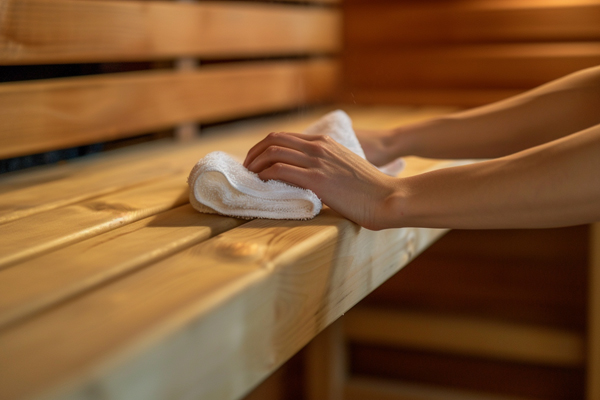
Sauna rooms accumulate sweat, bacteria, and moisture, which can cause odors and deterioration.
Cleaning a sauna regularly prevents bacterial growth2, extends material lifespan, and maintains a pleasant environment.
The Risks of Poor Sauna Maintenance
| Problem | Cause | Impact |
|---|---|---|
| Mold Growth | Excess humidity, lack of airflow | Health risks, odor |
| Wood Decay | Moisture absorption | Structural damage |
| Bacteria Build-up | Sweat, dirt accumulation | Unhygienic conditions |
Regular cleaning minimizes these risks, keeping the sauna safe and functional.
How Often Should You Clean Your Sauna for Optimal Performance?
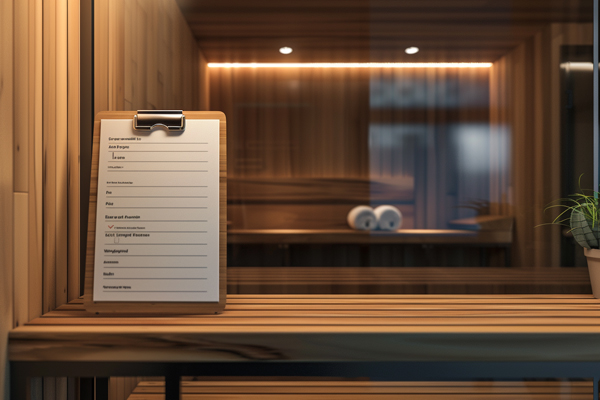
Regular cleaning is essential, but frequency depends on sauna usage.
For home saunas, clean weekly. Public or commercial saunas require daily cleaning3.
Recommended Sauna Cleaning Frequency
| Task | Home Sauna | Commercial Sauna |
|---|---|---|
| Light Cleaning (sweeping, wiping) | After each use | Daily |
| Deep Cleaning (scrubbing, disinfecting) | Weekly | Every 2-3 days |
| Heater Maintenance | Monthly | Weekly |
Following this schedule ensures optimal sauna hygiene and durability.
What Are the Best Cleaning Products for a Sauna Room?
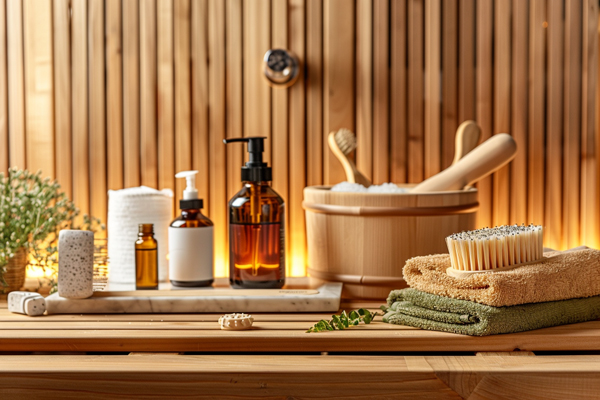
Using the right cleaning products prevents wood damage and maintains safety.
Avoid harsh chemicals. Use mild, non-toxic cleaners4 safe for wood and sauna stones.
Recommended Sauna Cleaning Products
| Product | Use | Safety |
|---|---|---|
| Mild Soap | General surface cleaning | Safe for wood |
| Vinegar Solution | Mold prevention | Non-toxic |
| Baking Soda | Stain removal | Odor-free |
Proper product selection keeps your sauna in top condition.
How to Properly Clean Sauna Benches, Walls, and Floors?
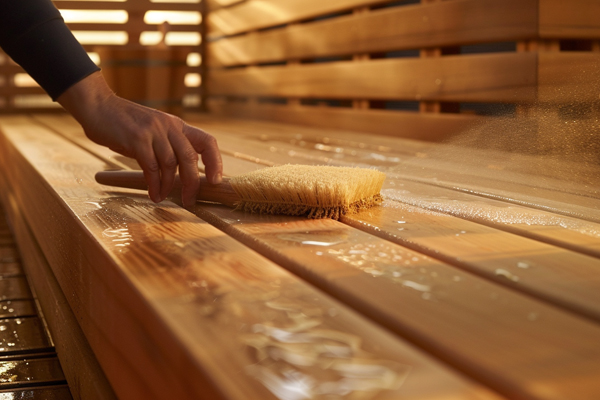
Sweat, dirt, and moisture accumulate on sauna surfaces, requiring thorough cleaning.
Wipe benches after each use. Deep clean weekly to remove bacteria and sweat stains.5
Step-by-Step Sauna Surface Cleaning
- Benches: Wipe with a damp cloth after use, scrub weekly with a mild cleaner.
- Walls: Dust regularly, use a soft brush to clean wood grain.
- Floors: Sweep daily, mop with warm water weekly.
Consistent cleaning ensures a fresh and comfortable sauna experience.
How Can You Prevent Mold and Bacteria Growth in a Sauna?

Moisture buildup leads to mold and bacteria growth in saunas.
Improving ventilation and using natural disinfectants prevent mold formation.
Mold Prevention Techniques
| Method | Effectiveness |
|---|---|
| Proper Air Circulation6 | Prevents humidity buildup |
| Regular Cleaning | Removes sweat and dirt |
| Natural Mold Inhibitors | Vinegar and baking soda prevent spores |
Taking these precautions keeps your sauna safe and hygienic.
What’s the Best Way to Maintain a Sauna Heater and Stones?

The sauna heater7 and stones require regular maintenance for efficiency.
Remove debris from sauna stones monthly and check for cracks. Clean heaters to prevent dust buildup.
Sauna Heater Maintenance Checklist
- Remove dust and dirt from the heater monthly.
- Check sauna stones for cracks and replace damaged ones.
- Avoid overloading stones in the heater.
Proper care ensures consistent performance and longevity.
Should You Use Essential Oils or Fragrances in Your Sauna?

Essential oils enhance relaxation but require careful use.
Use diluted essential oils in a sauna-safe bowl, never directly on sauna stones.
Safe Essential Oil Usage
| Oil | Effect | Application |
|---|---|---|
| Eucalyptus8 | Respiratory relief | Add a few drops to water |
| Lavender | Stress relief | Use in a diffuser |
| Citrus | Energizing | Spray lightly on walls |
Used correctly, essential oils enhance the sauna experience.
How Do You Protect Wooden Surfaces from Damage Over Time?
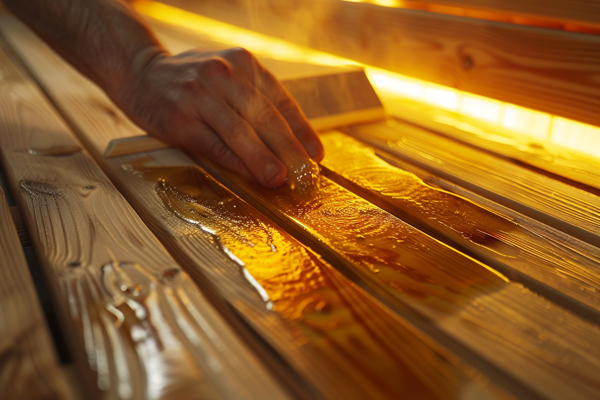
Wood in saunas is vulnerable to heat and moisture damage.
Use protective treatments9 and avoid excessive water exposure.
Wood Protection Tips
- Avoid harsh cleaning chemicals.
- Use a sauna-friendly wood sealant annually.
- Maintain proper humidity levels.
These steps extend the lifespan of sauna wood surfaces.
What Are the Most Common Sauna Maintenance Mistakes to Avoid?

Some cleaning habits do more harm than good.
Avoid excessive water use, harsh chemicals, and poor ventilation.
Common Sauna Maintenance Errors
| Mistake | Consequence |
|---|---|
| Overusing Water | Warps and damages wood |
| Using Bleach | Harms sauna surfaces |
| Neglecting Ventilation | Causes mold growth |
Preventing these mistakes keeps your sauna in excellent condition.
How Can You Improve Sauna Ventilation for Better Air Quality?

Proper ventilation is essential for maintaining a healthy sauna environment.
Keep vents clear and open, and ensure airflow circulation10.
Ways to Improve Sauna Airflow
- Clean air vents regularly.
- Ensure intake and exhaust vents function properly.
- Use a small fan outside the sauna for air circulation.
Good ventilation enhances the sauna experience.
Is There a Difference in Cleaning a Traditional vs. Infrared Sauna?

Cleaning techniques vary between traditional and infrared saunas.
Infrared saunas require less moisture cleaning, while traditional saunas need more ventilation.
Cleaning Comparison
| Sauna Type | Cleaning Focus |
|---|---|
| Traditional | Moisture control, wood care11 |
| Infrared | Dust removal, light panel care |
Understanding these differences helps in proper maintenance.
What’s the Best Routine for Deep Cleaning a Sauna Room?

Deep cleaning maintains long-term sauna performance.
Scrub benches, disinfect surfaces12, and check for any needed repairs.
Deep Cleaning Steps
- Remove debris from all surfaces.
- Scrub wood using a mild cleaner.
- Disinfect heater and stones with a dry brush.
Performing deep cleaning regularly keeps the sauna in top shape.
Conclusion
Regular sauna maintenance prevents bacteria, mold, and damage. Cleaning frequency, proper ventilation, and choosing the right cleaning products keep the sauna in excellent condition. Avoiding common mistakes and maintaining heaters, stones, and wooden surfaces extend longevity. Following a structured cleaning routine ensures a hygienic, durable, and enjoyable sauna experience.
-
Understanding the importance of regular cleaning can help you maintain a healthier sauna environment and prolong its lifespan. ↩
-
Exploring the effects of bacterial growth can provide insights into health risks and the importance of hygiene in sauna maintenance. ↩
-
Exploring the cleaning requirements for commercial saunas can provide insights into maintaining high standards of hygiene in public facilities. ↩
-
Explore this link to discover effective and safe cleaning solutions that protect your sauna's wood and stones. ↩
-
Explore effective deep cleaning techniques to maintain hygiene and prolong the life of your sauna surfaces. ↩
-
Learn about the importance of air circulation in saunas to prevent mold and ensure a healthy atmosphere. ↩
-
Discover essential tips for sauna heater maintenance to enhance efficiency and extend its lifespan. ↩
-
Learn about eucalyptus oil's respiratory benefits and how it can enhance your sauna sessions. ↩
-
Explore this link to discover effective protective treatments that can enhance the durability of your sauna wood surfaces. ↩
-
Exploring methods to improve airflow circulation can lead to a more comfortable and healthier sauna environment. ↩
-
This resource will provide essential tips for maintaining your traditional sauna, focusing on moisture and wood care for optimal performance. ↩
-
Learn the best methods for disinfecting sauna surfaces to ensure hygiene and safety for users. ↩


